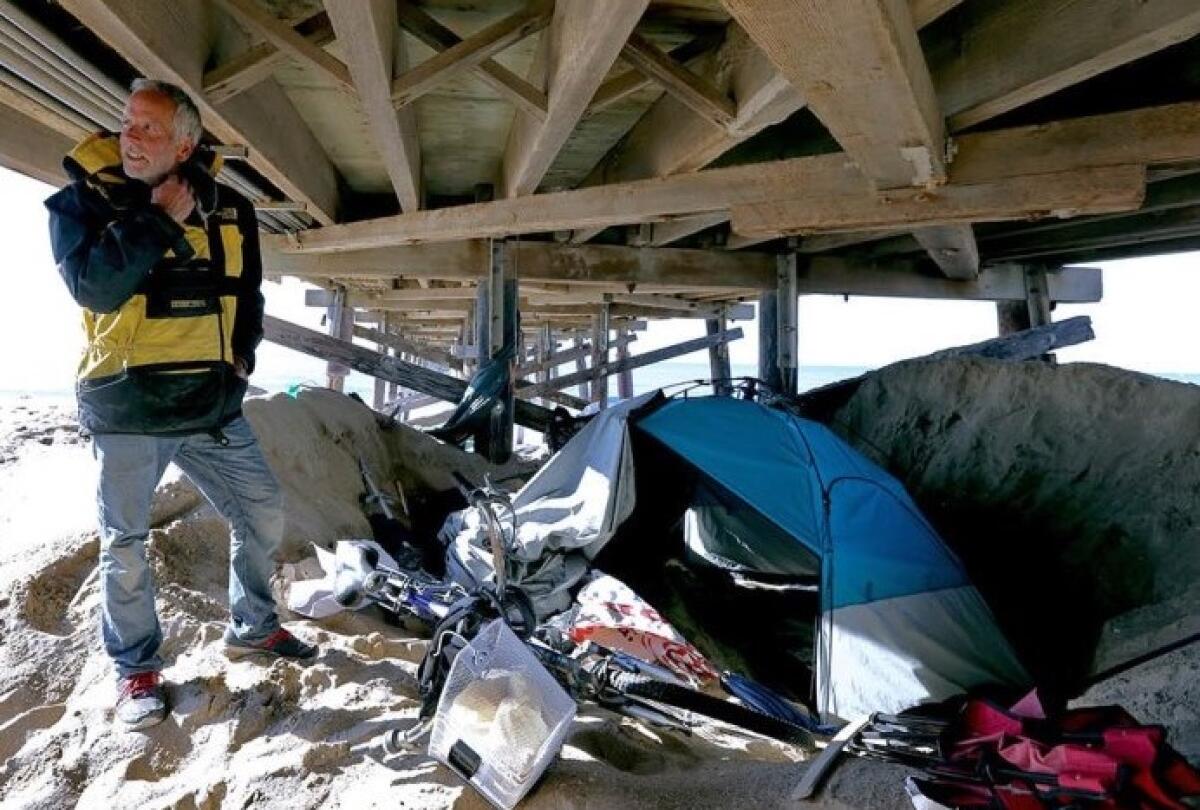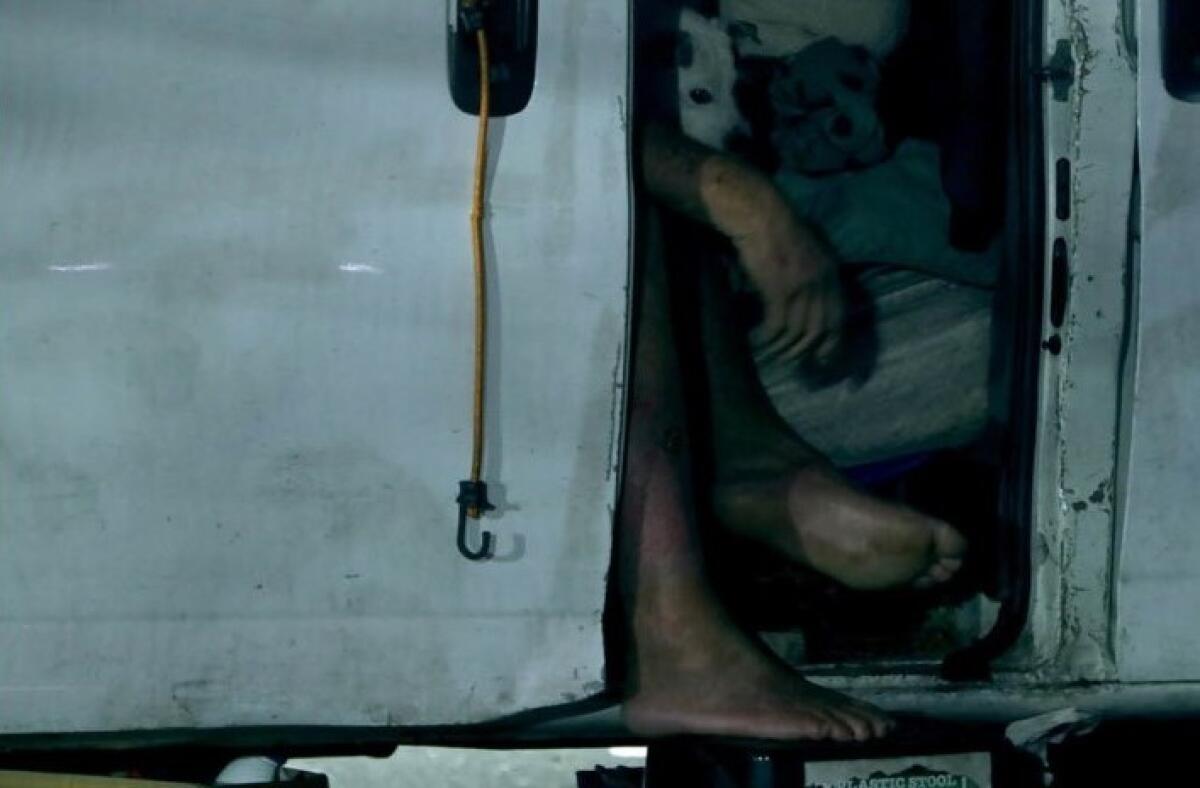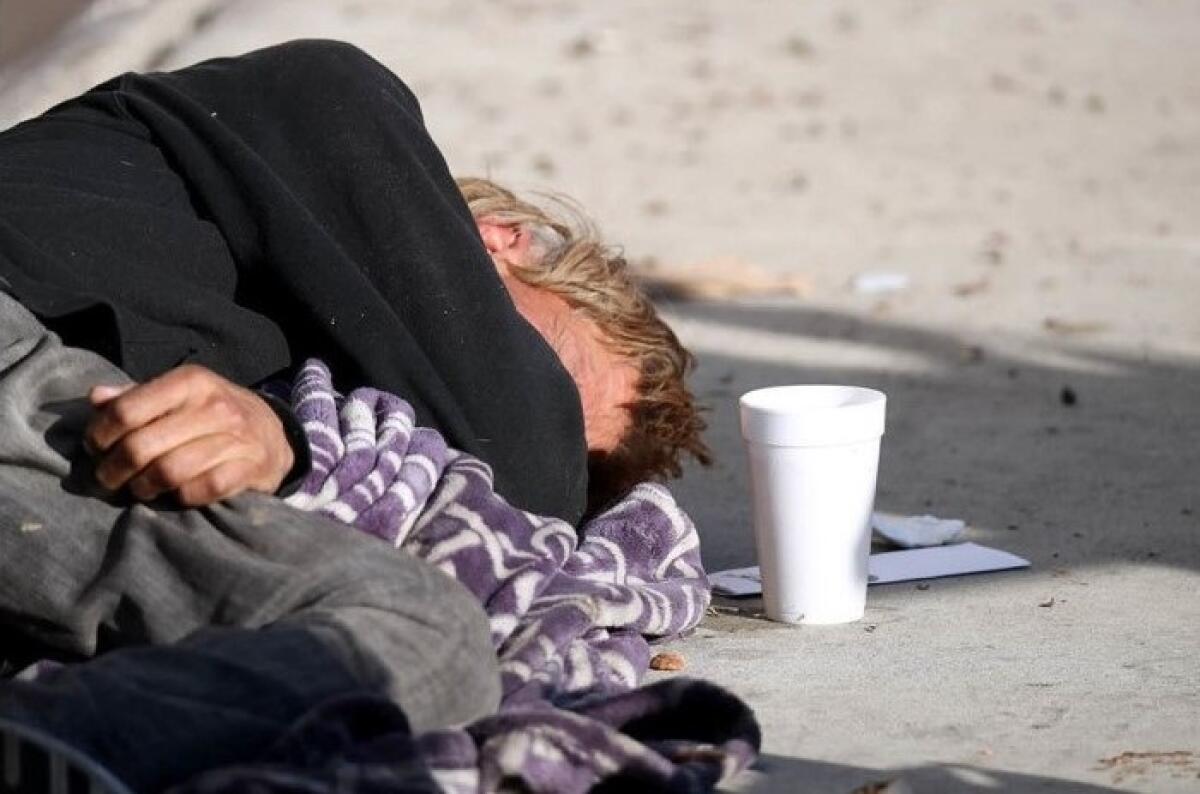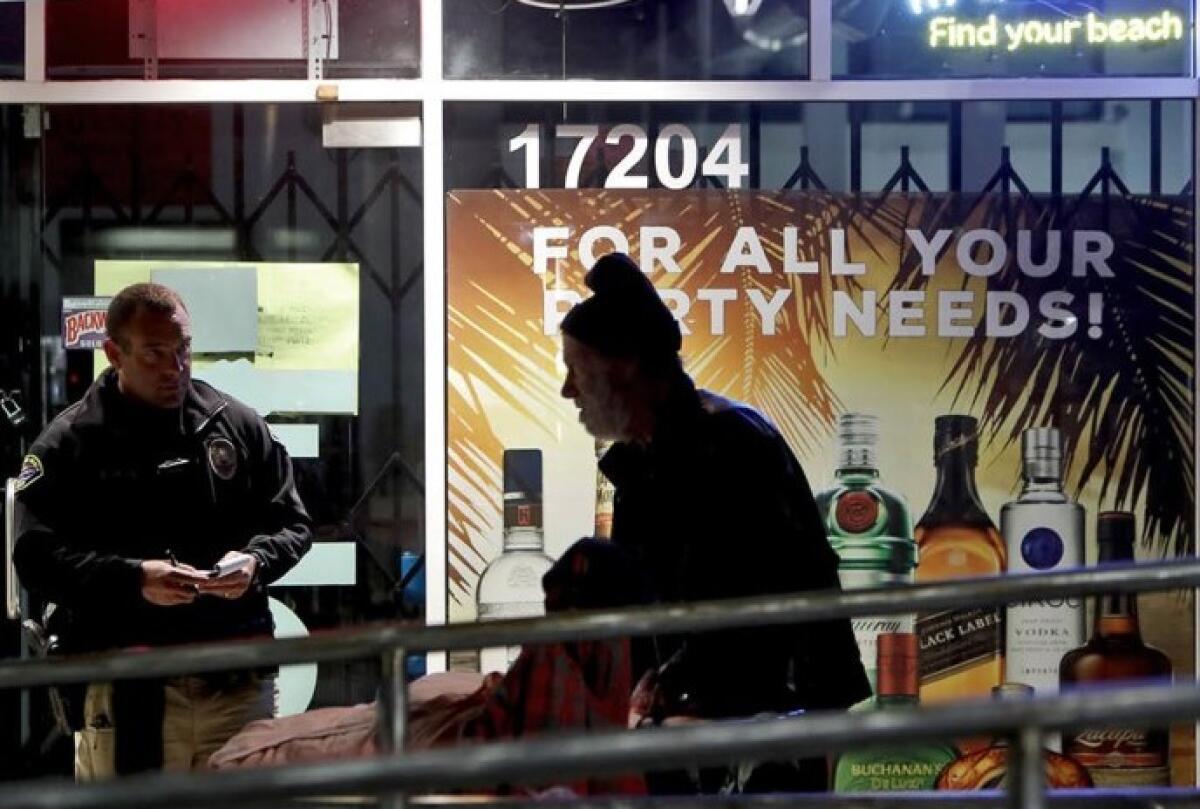Unsheltered, Part 5: It won’t be easy, but O.C. can beat homelessness, experts and officials say

This is the last article of Unsheltered, a five-part series examining homelessness in the cities of Costa Mesa, Fountain Valley, Huntington Beach, Laguna Beach and Newport Beach. Though many private organizations and various levels of government are involved in the search for solutions, the series looks specifically at the problem in local cities, what they are doing about it and what more might be done. This part examines whether ending homelessness is a realistic goal.
Homelessness is a problem that is not easily confined.
It can’t be labeled as a social issue, an economic one or a political one. Its roots reach into all those areas and beyond.
Given how many factors play a role in California’s homelessness epidemic, it wouldn’t be surprising for cities and counties throughout the state to feel a bit like Sisyphus, the figure from Greek mythology who was doomed to forever push a boulder up a hill, only for it to roll back down when he neared the top.
Despite unprecedented attention from local governments up and down the Golden State — many of which have beefed up their resource offerings and financial commitments in recent years — the summit has so far remained out of reach.
In September, some politicians were pressing Gov. Gavin Newsom to declare a state of emergency on homelessness — a move that would potentially free up additional state and federal dollars and clear some regulatory hurdles standing in the way of new facilities that would serve homeless people.
“It is entirely reasonable ... that the situation will get worse if we don’t act soon to address these needs,” said Huntington Beach City Councilwoman Barbara Delgleize. “Our infrastructure — our parks, beaches, restrooms, libraries and streets and alleys — can’t handle the impact of so many homeless.”
The push for another tool in the toolbox underscores a key point: Even with everything the state, counties and cities have done to address homelessness, it hasn’t been enough.
Despite the challenges inherent in comprehensively tackling an issue so massive in scale, scope and complexity, some homeless advocates in Orange County say they’re heartened by how the past few years have unfolded and are hopeful about the future.
“We truly believe that you can end homelessness,” said Becks Heyhoe, director of United to End Homelessness for Orange County United Way. “And we don’t think people realize that ... other communities have ended homelessness.”

Nationwide, 78 communities and three states have effectively ended veteran homelessness — meaning they “have a comprehensive response in place that ensures homelessness is prevented whenever possible or, if it can’t be prevented, it is a rare, brief and one-time experience,” according to the U.S. Interagency Council on Homelessness, which coordinates federal efforts to end and prevent homelessness.
Of those communities, only one — the city of Riverside — is in California.
The latest Point in Time count, a federally required biennial census of the homeless population, found 311 homeless veterans in Orange County in January 2019. They’re the focus of a recently launched initiative called Marching Home: A Strategy to End Veteran Homelessness in Orange County, which aims to fulfill its goal by the end of 2020.
“We must take care of the men and women who served our country,” county Supervisor Michelle Steel said in July when Marching Home was approved. “We are making progress with Marching Home by connecting homeless veterans to the resources and services they need, including their families.”
Steel’s district includes Costa Mesa, Huntington Beach, Newport Beach and part of Fountain Valley.
State Assemblywoman Cottie Petrie-Norris (D-Laguna Beach) secured $2.9 million in state money last year for the United Way’s United to End Homelessness Welcome Home OC program, which provides rental-assistance vouchers to help place homeless veterans in private apartments.
Though such efforts, and the successes in other communities, may spark optimism about ending veteran homelessness, that group makes up a small slice of the homeless population. Veterans accounted for about 4.5% of the 6,860 homeless people documented in Orange County in the latest Point in Time count.
“We truly believe that you can end homelessness. And we don’t think people realize that ... other communities have ended homelessness.”
— Becks Heyhoe, director of United to End Homelessness for Orange County United Way
Challenges and opportunities
According to the final report from the Point in Time count, a much greater challenge is the population of the chronically homeless — those who have a “disabling condition” and have been homeless “continuously for at least one year or on at least four separate occasions in the last three years where the combined length of time homeless ... is at least 12 months.”
Of the total documented in the last census, 2,491 — more than a third — qualified as chronically homeless. Most were unsheltered, meaning they were staying on the streets, in their cars or in some other place not considered a regular sleeping location.

Only four areas nationwide — the city and county of Lancaster, Pa.; Rockford, Ill.; Bergen County, N.J., and communities in the Southwest Minnesota Continuum of Care — have been able to end chronic homelessness, according to the U.S. Interagency Council. Continuums of care are local planning bodies that work to coordinate homeless services within specific areas.
Advocates and service providers for the homeless often point out that there are no one-size-fits-all solutions, but the chronically homeless present additional challenges. They often require the most resources, support and attention to make sure they don’t fall through the cracks.
“To achieve a stable housing situation, most chronically homeless not only need a rent-subsidized apartment, they also require access to supportive services to ensure they can remain there,” according to a May 2018 Orange County grand jury report titled “Where There’s Will, There’s a Way: Housing Orange County’s Chronically Homeless.”
“For example, someone with mental health issues may need assistance to ensure they get counseling and take medications as prescribed. Likewise, a person suffering from a chronic and debilitating illness may require help managing their diet and ensuring they make their doctor appointments.”
In other words, it’s not simply a matter of putting a roof over someone’s head.
Still, advocates and service providers say working to aid the chronically homeless, though difficult, has clear benefits that outweigh the effort.
“The impact of stable housing on health and mental health and addiction is hard to quantify, but we see people really change and grow and get better with that stability,” said Dawn Price, executive director of Friendship Shelter in Laguna Beach.
Financial effects and benefits

In addition to the humanitarian aspect, cities have a financial reason to push for solutions for the chronically homeless, advocates say.
According to a June 2017 study by the United Way, UC Irvine and Jamboree Housing Corp., the estimated average annual cost to provide services to a chronically homeless person on the street was $100,759. That figure included everything from meals at soup kitchens and food pantries to shelter stays to emergency room visits.
By comparison, the estimated yearly service cost for those in permanent supportive housing was $51,587 per person, the study said, and carried the added benefit of linking those people with individualized resources aimed at helping them stay housed.
“Whether you want to or not, your tax dollars are going toward homelessness, so how would you like them to be spent?” Heyhoe said. “It is cheaper to house people and provide them services to remain there, whether they’re chronic or non-chronic, than it is to leave them on the streets.”
Advocates and experts say they’re hopeful for the future partly because many local leaders are signaling a willingness to work together to address homelessness in Orange County. Some attribute that both to the swelling number of people living on the street and wider knowledge of the realities of homelessness.
“I’ve been doing this work for 20 years and I’m more optimistic today about our ability to address homelessness, and part of that is because homelessness has become such a visible issue, particularly in Orange County,” said Helen Cameron, community outreach director for Jamboree Housing, an Irvine-based developer of affordable and supportive housing.
Bill Nelson, whose Costa Mesa-based Fresh Beginnings Ministries assists and provides services to homeless people, agreed that “what we’re seeing is a lot of compassion from our civic leaders ... they’re stepping up.”
“If you haven’t dealt with [homelessness] your whole life, then it’s hard to know what to do, so I applaud them for at least putting efforts forth to try to figure out what is the best way to do it,” Nelson said. “No two homeless people are alike. You can’t just say, ‘This is the answer for everybody’ and have it happen.”
Another factor contributing to the recent momentum is that cities — either willingly or because of legal action — are agreeing to open homeless shelters in their communities or welcome new supportive housing.
“There’s a push now, because of the intersection of court decisions and [the] cost study, to develop certain forms of housing to take the homeless off the street — a more united mobilization than there has been probably for a long time, maybe ever, in Orange County,” said David Snow, a UC Irvine sociology professor who helped conduct the cost study.
Cooperation is key
City officials say they’re willing to roll up their sleeves and tackle the issue in their communities. But, they say, there needs to be buy-in across the region.
“Collaboration across jurisdictions is the key to overcoming the challenges we face in addressing homelessness,” according to a statement from the Costa Mesa city manager’s office. “As the situation is also in many ways of national scope, the federal government must do more to appropriately provide adequate funding, supportive services and housing for those that are, or may soon be, experiencing homelessness.
“With such a commitment, state, county and city governments can better work to further collaborate with public and private organizations to develop strong, lasting solutions.”
In a joint statement, Newport Beach City Council members Brad Avery, Joy Brenner and Will O’Neill said they think reaching regional consensus on homelessness solutions is “very realistic, so long as community leaders in government and private are humble enough to recognize that we can do better.”
“There’s a push now ... to develop certain forms of housing to take the homeless off the street — a more united mobilization than there has been probably for a long time, maybe ever, in Orange County.”
— David Snow, UC Irvine sociology professor
Financial support, however, remains a key component.
“In many ways, there’s already a consensus, and much progress is happening in different parts of the county,” said Huntington Beach Councilman Patrick Brenden. “Solving homelessness is an incremental game. With additional funding, we will continue to chip away at the problem.
“Elected officials at all levels need to be steadfast in their commitment to providing resources to keep us moving forward.”
Fountain Valley Councilman Steve Nagel said “consensus could happen much quicker if the county is able to lead and provide the funding required to provide all the shelter beds and support services that are required. The state is creating new funding for homeless help, which the county can access and use to help fund future solutions.”
Orange County administers state and federal funding for a variety of homeless programs. Cities and other eligible agencies can apply for those dollars, according to county spokeswoman Molly Nichelson. For example, she said, the county provides funding for the Alternative Sleeping Location shelter in Laguna Beach.
But in a Twitter thread responding to a previous article in this series, Costa Mesa Mayor Katrina Foley wrote that “the money is there, it’s just not flowing to the cities to help them.”
“No city can do its fair share for [the] long term without supplemental funding,” Foley wrote. “The state must address and mandate distribution to cities. … We can’t sustain it alone.”
Foley said the county denied Costa Mesa’s request for $500,000 last year, even as the city committed millions of its own dollars toward homelessness-related efforts.
Nichelson said that while the county is a major player in the effort to fight homelessness, “each stakeholder has an important role to play … through regional policy and implementation strategies, affordable-housing development, supportive services and systemic change.”
“Homelessness is a regional issue,” she said, “and no one jurisdiction or entity will be able to address homelessness as a whole.”

One at a time
Though the homelessness problem may appear overwhelming from long range, some officials and those with the closest view of it point out that the homeless are, first and foremost, people.
“Solving this issue is the humane and kind thing to do for our fellow human beings,” Delgleize said.
Helping even one person get out of that condition is cause for celebration and a call to keep working, even in the face of long odds, advocates say.
Phil Eyskens — pastor of Lighthouse Church of the Nazarene in Costa Mesa, which houses that city’s homeless shelter — used a parable to illustrate the sentiment:
Two men are strolling along the beach when they notice that hundreds of starfish have washed ashore. One of the men stops, picks up a stranded, dried-out creature and lobs it back into the ocean.
His companion says, “Why are you even bothering? The problem is so big.”
The man responds, “Well, if you save one, you’ve accomplished something.”
Daily Pilot staff writers Lilly Nguyen and Julia Sclafani contributed to this report. Priscella Vega writes for the Los Angeles Times.
All the latest on Orange County from Orange County.
Get our free TimesOC newsletter.
You may occasionally receive promotional content from the Daily Pilot.






